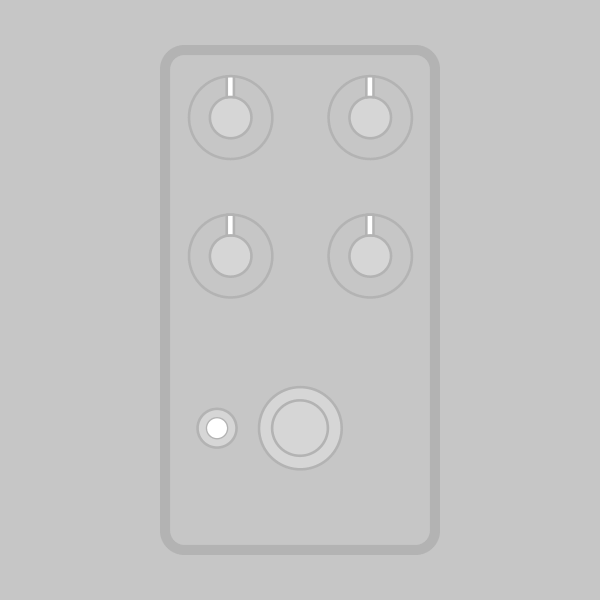
The Hexeract CMOS Drive is based on the Electro-Harmonix Hot Tubes, a CMOS-based overdrive first released in 1978. It was perhaps the first commercial product that used overdriven hex inverters, a method invented by Craig Anderton a year earlier in his “Tube Sound Fuzz” DIY project.
The Hot Tubes took this core idea and wrapped it in a few extra op-amp stages and a tone control, resulting in a full-featured overdrive with a sound all its own. It was given the name “Hot Tubes” because overloaded CMOS inverters give a softer and more asymmetric clipping than diode-based circuits, reminiscent of overdriven vintage tube amplifiers.
The Hot Tubes was discontinued in 1981 when EHX ran into financial troubles. From 1978 to 1981, there were at least three different color schemes for the enclosure, but there are no known circuit changes throughout this time.
EHX muddied the waters in 2005 by releasing a true tube overdrive in 2005 that was also called the Hot Tubes, in this case using the name in a literal sense instead of metaphorically. They even reused the cosmetics, but despite this the 2005 pedal had nothing whatsoever to do with the 1978 CMOS Hot Tubes. EHX did a real reissue of the CMOS circuit in 2013 as part of their Nano series, and later combined it with the Crayon as the “Hot Wax” dual pedal.
The Hexeract is a reproduction of the original Hot Tubes. A small amount of additional filtering has been added, but otherwise it’s the same as the vintage 1978 circuit.